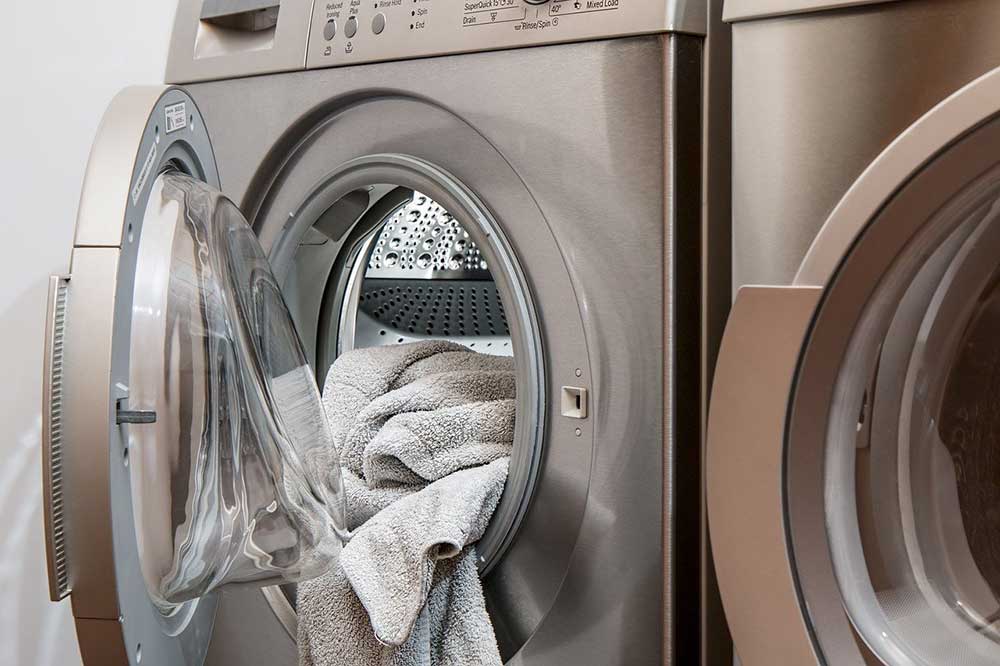The washing temperature is a matter of real debate. Especially for underwear, delicate clothing and household linen. The question is therefore legitimate: at what temperature should you wash your clothes?
Are high temperatures more efficient? Conversely, are low temperatures better for the environment? Which temperature best preserves the quality of our clothes?
There are many questions that need to be answered. Discover our tips and tricks for becoming a washing pro.
What temperature should I use to wash my clothes?
Most of the electricity consumed by washing machines is used to heat the water. Choosing the right temperature for your wash cycle is therefore essential to limit and optimise your energy consumption.
The temperature indication often depends on the material, as few fabrics are heat resistant. Therefore, it is recommended that only hard-wearing, easy-care fabrics be washed at 60°C or 90°C. This category includes bath towels, cotton underwear and bed linen made of cotton or terry cloth.
However, jumpers made from natural fibres can become distorted if the temperature is too high. It is therefore best to wash them at 40°C maximum.
Be careful with synthetic fibres, however, as these materials can melt if the temperature is too high. Wool and silk, or any other fragile fibre, can be damaged more easily at high temperatures. It is therefore not advisable to wash at temperatures above 30°C in the washing machine or by hand.
Hand washing is required when the hand symbol is drawn. If the washing symbol is completely crossed out, for example for very delicate fabrics, it is best to take the garment directly to a laundry.

Cold wash for delicate garments
Today, more and more manufacturers are offering active detergents from 20°C. Very few detergents claim to be effective in the cold state, but do not specify a minimum wash temperature. It is advisable to consult the washing recommendations of your detergent before opting for a cold wash.
However, low wash temperatures have the advantage of preserving fabrics and colour vibrancy, where heat tends to shorten the natural fibres of textiles such as cotton and crease synthetic fibres.
Washing at low temperatures also results in lower consumption.
Some stains may be tougher and need to be washed at a higher temperature, such as oil or grease stains. As with washing up, hot water washes better than cold water. It is easier to loosen the dirt embedded in the fabric. It is therefore not recommended to wash relatively dirty clothes at low temperatures.
Why should I wash at 60 degrees?
The ideal temperature for washing household linen is 60°C. Whether for sheets, towels, tea towels, often stained and very dirty, these fabrics need a higher temperature and a little more detergent.
To be sure of the effectiveness of a wash, use a stain remover before starting the machine. Lemon and baking soda are also excellent natural stain removers. For example, baby clothes should also be washed at 60°C to eliminate bacteria and ensure a healthy environment.
The 90°C wash temperature is reserved for heavily soiled white cotton or linen laundry, such as underwear, bath towels, kitchen towels or baby bibs.
Here are some examples of when washing at 90°C is effective:
- Linen is soiled with body fluids such as blood, urine, faeces, vomit...
- Washable linen in case of illness or strict hygiene requirements.
- Kitchen towels or linen that has been in contact with food.
- Sportswear.
- Clothes that are left with a bad smell after washing.
- Linen of people who are ill or sensitive to infections/mites or who have been in contact with them.
As you know, bathroom, kitchen and bed linen must be washed regularly. Bacteria, dust mites and fungi are only eliminated at a temperature of around 60°C. It is also important to note that whites and dark colours should be washed separately at this temperature, otherwise your white underwear will turn pink.
Why should I wash at 30 degrees?
Clothes that you wear every day, but are not very dirty, can be washed at 30°C. It has been proven that washing at 30°C uses half the energy of washing at 60°C and three times less than washing at 90°C.
A thermostat setting of 30°C is sufficient to activate the cleaning agents contained in the detergent and to refresh the clothes. Warm water also prevents colours from bleeding and does not damage clothes that are often washed out. However, it should be noted that it is not suitable for the care of bed linen or towels.
Washing at 30°C is therefore ideal for :
- Clothes in direct contact with the body if they are normally dirty, not damp and will be dried in the sun or in a dryer.
- Delicate, fairly dirty laundry.

How to maintain your washing machine?
Washing at low temperatures allows for environmentally friendly washing.
However, frequent washing at low temperatures can cause biofilms to form in the machine. These are a collection of bacteria and fungi that stick to the inside of the machine when in contact with wet surfaces.
How to clean your washing machine?
To limit the growth of bacteria and fungi and thus maintain your washing machine:
- We recommend that you always use the correct amount of detergent, as specified by the manufacturer, to avoid detergent residues remaining in the machine.
- Always leave the washing machine door open between machines to allow moisture to escape.
- A vacuum machine is run at 60°C every 5 cycles (about once a month). You can also add a little baking soda to destroy microbes.
At Hoovernez, we develop follow-up and provide personalised advice to better meet the specific needs of each individual.
If you would like more information on this subject, please contact Hoovernez

